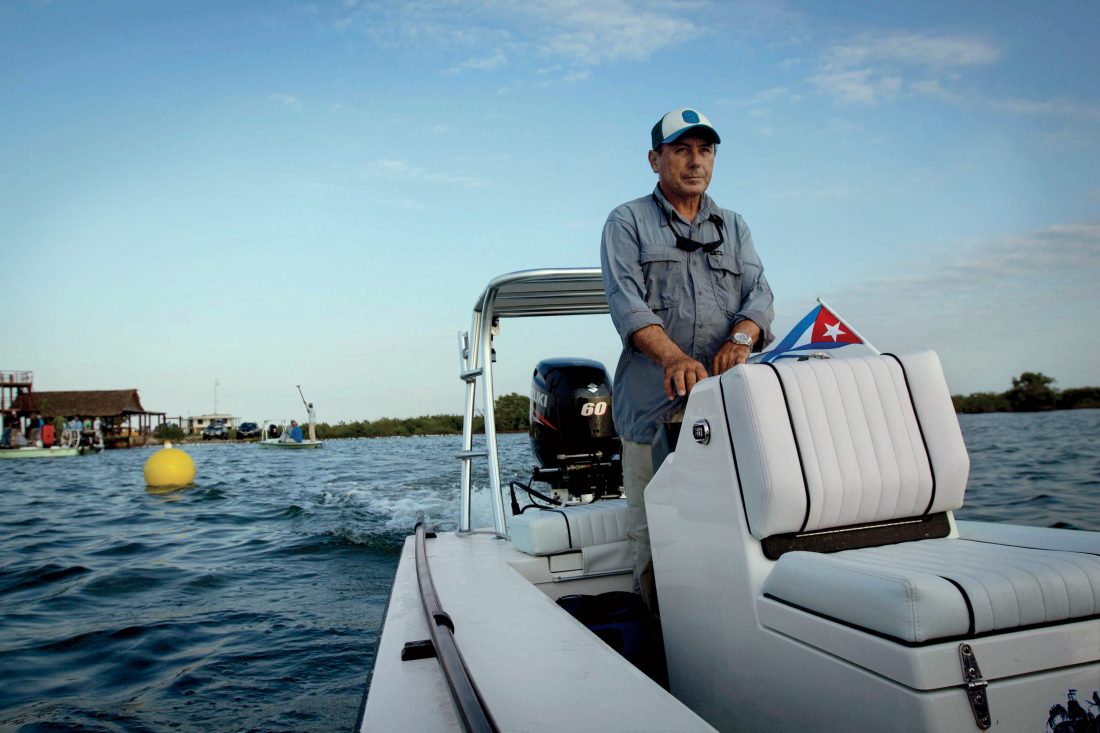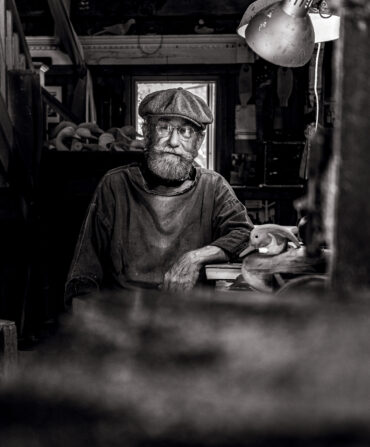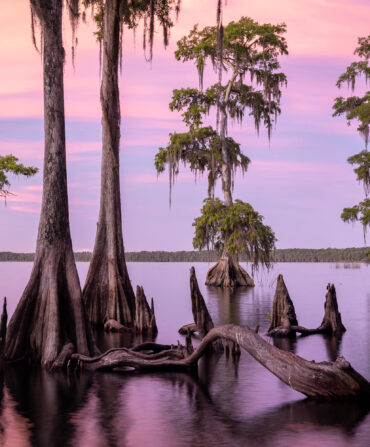Sporting
Cuba Calling
Exploring a newfound flats-fishing treasure

Photo: Simon Perkins, Orvis
About twenty minutes after the troops search our van at a standard military checkpoint, light hits the swamp. Birds are everywhere—gray egrets, herons, flamingos—and the road rolls wildly up and down. Every spring, we’re told, it must be repaved. Traffic isn’t the issue, but rather the unruly waters, which flood over it regularly during hurricane season. Our leader is Felipe Rodríguez Alonso, a fifty-eight-year-old Cuban fishing guide with a stocky build and a wry grin. As the high saw grass waves in the hot sun and an egret rises from a skeleton-like tree, Rodríguez says, “Estoy buscando americanos!” (I’m looking for Americans!).
He and a fellow guide, a salty bird-watcher with a long face nicknamed Manolo, crack up at the old joke. We’re entering the Ciénega de Zapata Biosphere Reserve, right near the place where, half a century ago, a team of U.S.-sponsored paramilitaries failed to overthrow the Castro regime during the Bay of Pigs invasion. But now different kinds of Americans are coming—tourists with fly rods.
The Bay of Pigs sits alongside the reserve, a watery wilderness larger than the Everglades. It’s a haven for nearly two hundred bird species, some of which exist nowhere else, not to mention crocs, manatees, and vast schools of bonefish, as well as tarpon and permit. What it doesn’t have are crowds. We pull into a makeshift parking lot near a two-story wooden structure that’s seen better days. This is our entrance to Las Salinas, eighty square miles of sheltered mangrove flats west of the Bay of Pigs. Only eight anglers per day are allowed to fish the area. We string up our fly rods and step out into the water in old flat-bottom wooden boats, my girlfriend, Stephanie, heading out with Rodríguez while I join Manolo. For a minute I’m mesmerized by the green and yellow grass just inches beneath the boat. Then Manolo hisses—tssssss—and points forward. Just thirty or so yards ahead, near a mangrove stand, is a great quavering V: bonefish. There must be a hundred of them swimming in formation, chasing shrimp larvae near the surface. The water looks alive. I cast, splash the water, and watch the fish scatter. Manolo scowls—my cast was too overhand, creating a large shadow—but I can’t help smiling. This is what the tropics look like without us.
Staunch conservation practices are part of the reason places like this, just hours from Havana’s noise, remain so pristine. “Cuba has some of the best environmental laws in the world,” says David Guggenheim, a Washington, D.C.–based marine scientist and the director of the Cuba Conservancy. “They’ve protected twenty-five percent of their waters.” Another reason for the bounty, though, is that decades of economic stagnation have kept the coastlines undeveloped. Doctors moonlight as cab-drivers, and in some rural areas people commute by horses and buggies lit by oil lamp. Most of what little advertising you see is state-sponsored propaganda. A road sign might say VIVA LA REVOLUCIÓN, or show the word CUBA forming a fist and knocking out Uncle Sam. Americans are rushing in now that relations are thawing, which brings hope for increased prosperity, but that, too, is complicated.
“We want more Americans,” Rodríguez says. “They have capital and knowledge.” He’s heavily invested in bringing ecotourism to this part of the island, running a fly-fishing school to teach locals the guiding trade. Since my visit earlier this year, he has partnered with Orvis to lead a new series of hosted trips to his Eden as of this fall. “Cuba needs so much,” he tells us. “But at the same time…” What he means is he doesn’t want to see a wall of Hiltons overlooking Las Salinas, either.
Over the next few searing hours, Manolo and I pole around the flats, seeing exactly no one, and hook- ing into numerous fish. Manolo poles us over to a shallow expanse of swampy islands and overhanging trees. He hisses and points ahead. There I see a translucent shape slowly curling out of the water: the dorsal fin of a large feeding bone. I cast sidearm, letting my shrimp fly land five or ten feet from the fish, and gently strip. The fish explodes on the fly, sending a great shiver of current through the flats, then takes off toward an island. My reel sounds like a circular saw cutting through a two-by-four. As the fish gets close to taking me into my backing, I try to slow the reel, and the bonefish makes quick work of my rig, breaking off the line and disappearing among the yellow grasses. As the limp line snaps back toward me, Manolo gesticulates and scowls. I’m shaken. To find a place where nature still puts you in your place is a gift.







